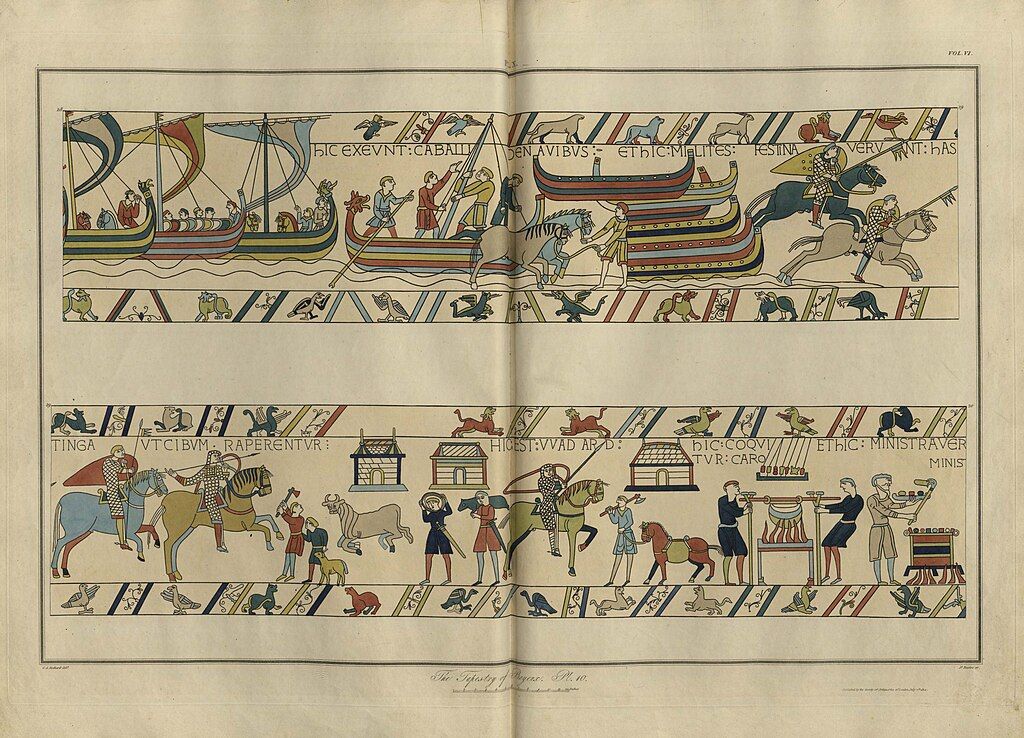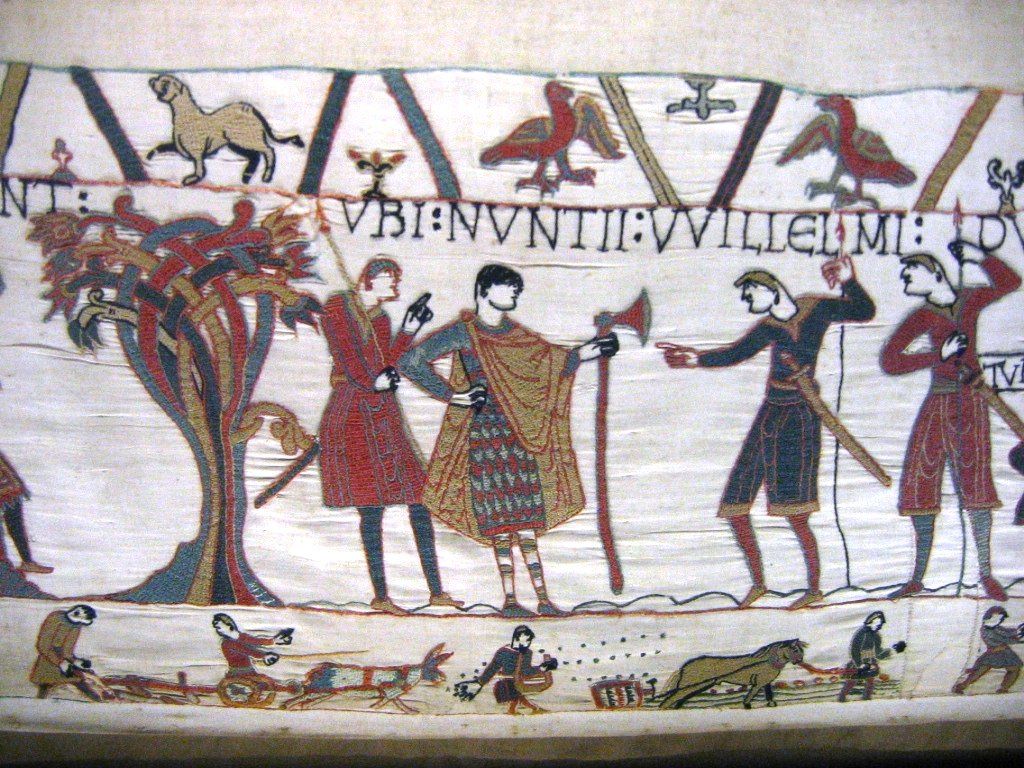The Bayeux Tapestry, a magnificent embroidered narrative, serves as a vibrant reminder of the medieval era. This tapestry, stretching over 70 meters, offers a unique glimpse into the historical events of the Norman conquest of England. Its richly stitched canvas not only portrays battles and strategies but also unveils the mentality and culture of the time, making it an invaluable source of information for historians and history enthusiasts alike.
The Origins of the Bayeux Tapestry
The creation of the Bayeux Tapestry, a masterpiece that narrates the tale of the Norman conquest of England, is deeply rooted in the 11th century, specifically around the 1070s. It is widely believed to have been commissioned by Bishop Odo, the half-brother of William the Conqueror, and the oversight of its meticulous embroidery is often attributed to Queen Matilda of Flanders, William’s consort. This hypothesis suggests a collaboration of significant historical figures in its inception, emphasizing the tapestry’s importance as a historical document.

The exact origins of its fabrication are linked to the region of Normandy, France, which further underscores the close ties between the tapestry and the Norman conquest narrative. Today, this invaluable piece of history is preserved at the Bayeux Museum in Normandy, where it continues to be an essential source for understanding the events and dynamics of the medieval period.
The Bayeux Tapestry Itself
The Bayeux Tapestry stands as an extraordinary example of medieval craftsmanship. It is embroidered on a linen canvas measuring 70.34 meters long and 50 centimeters wide. This hand-stitched masterpiece is adorned with patterns formed using couching and stem stitch techniques, employing threads of various colors to bring its narratives to life. It features 72 scenes accompanied by brief Latin inscriptions, providing a cohesive story of the events it depicts. The edges of the tapestry are intricately embellished with a menagerie of animals, including eagles, foxes, vultures, lions, roosters, and dragons, adding a layer of symbolic richness to the historical recount.
The tapestry boasts at least 1,512 figures, including humans, ships, castles, lavish houses, and churches, all depicted in vivid hues. Among these scenes, there are 623 people, 55 dogs, 202 horses, 41 ships, and 49 trees, interspersed with about 2,000 Latin words and over 500 mythical creatures, all rendered in eight distinct colors. This intricate detailing and the diversity of life and legend captured on the tapestry make it not only a historical document but a piece of art that continues to reveal the complexity of the medieval mindset and the epoch it represents.
Insights from the Bayeux Tapestry
The Bayeux Tapestry unfolds with the political and personal turmoil preceding the Battle of Hastings in 1066. It sets the scene with Harold II, the powerful Anglo-Saxon noble, embarking on a journey to Normandy following King Edward the Confessor’s deathbed directive. This journey, fraught with misfortune including a shipwreck and Harold’s capture by Count Guy de Ponthieu, introduces the tapestry’s portrayal of medieval politics and diplomacy. William of Normandy’s negotiation for Harold’s release, under conditions that foreshadow Harold’s eventual pledge to support William’s claim to the English throne, is depicted with a notable emphasis on the strategic maneuvering that characterized the period’s power dynamics.

In the tapestry, Harold’s return to England and subsequent crowning, despite his oath to William, marks a betrayal that precipitates the Norman invasion. The narrative detail extends to the distinctive appearances of the opposing forces—Normans with shaved heads and Anglo-Saxons with mustaches—and culminates in the decisive confrontation at Hastings. The aftermath, showing Harold’s demise and the crowning of William as king, is not just a tale of conquest but a story of promises, betrayal, and the relentless pursuit of power. Through these embroidered scenes, the tapestry not only documents the events that reshaped the English monarchy but also offers insights into the medieval mindset, where oaths and honor played pivotal roles in the fate of nations.
Bayeux Tapestry Today
Today, the Bayeux Tapestry is meticulously preserved and displayed at the Musée de la Tapisserie de Bayeux in Bayeux, Normandy, France. This museum not only houses the tapestry but also offers visitors an immersive experience of the conquest of England by William, Duke of Normandy in 1066, through the detailed and vibrant storytelling of the tapestry itself. An audio-guide commentary available in 16 languages enriches the visit by providing historical context and insights into the creation of this medieval masterpiece.
Additionally, a permanent exhibition on the first floor further complements the narrative depicted in the tapestry, making it a comprehensive source of historical knowledge. The museum is part of a trio of museums in the area, alongside the Memorial Museum of the Battle of Normandy and the MAHB Museum of Art and History Baron Gérard, each offering unique perspectives on the rich history of Normandy and its significance in medieval and modern times.
Historical Challenge: Can You Conquer the Past?
Answer more than 18 questions correctly, and you will win a copy of History Chronicles Magazine Vol 1! Take our interactive history quiz now and put your knowledge to the test!

